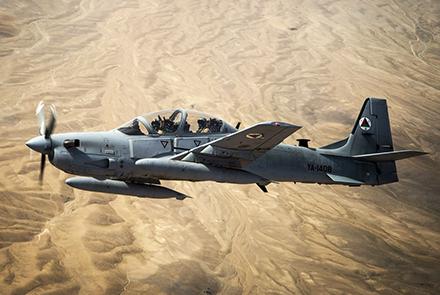The Afghan air force won’t be able to fly effective combat missions within months if the few remaining allied advisers leave, a report to Congress by the Lead Inspector General for Operation Freedom’s Sentinel said, according to Stars and Stripes.
Almost 94% of NATO’s Train Advise Assist Command-Air personnel tasked with helping build Afghanistan’s air force have already left the country over the last nine months, according to the report.
The sharp drawdown of foreign military advisers, mainly from the US, has virtually paralyzed the mission to train crews and maintain the service’s aircraft, it said.
If US forces leave Afghanistan by the May 1 deadline outlined in last year’s deal with the Taliban, the Afghan air force will have to maintain its aircraft and facilities on its own, it said.
But the service is still “completely dependent” on expensive US contractors, who are also supposed to depart as part of the deal.
Without this support, “no airframe can be sustained as combat effective for more than a few months,” the report said.
The strains of reduced manpower have left the command’s mission “largely static,” with less advising and oversight, the report released Wednesday said. “Lost training time, lack of US military evaluators to assess proficiency, and reduced advisor oversight have (led to a) decline in basic skills for aircrews and maintainers,” it said.
The reduced US military footprint has meant almost total reliance on contractors to train airmen, with fewer personnel to check on them.
“It has been difficult to hold contractors accountable,” the command said.
The few Afghan pilots and crew members are also overextended, flying excessive hours on missions often above their experience level, it said.
Finding replacements for these pilots could prove difficult, as the drawdown led to the end of contracts to train MD-530 and UH-60 air crews. The training program for the A-29 program may be next on the chopping block, the report said.


